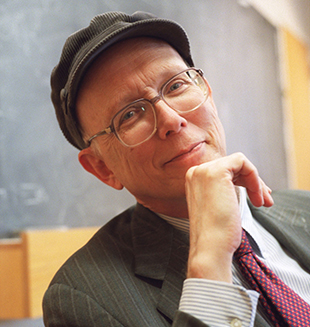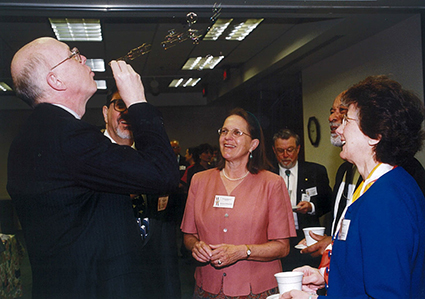

George Whitesides (1939 )
“Chemistry is the most fundamental of the scientific disciplines that deals with the perceptible
world. Everywhere you look, what you see is chemistry in operation.”
–George Whitesides
National Medal of Science (NMS) recipient in 1998 “for innovative and far-ranging research in chemistry, biology, biochemistry and material science, pioneering work of technological interest and his extensive involvement with teaching, government and industry.”
“Being alive is thoroughly amusing. Science and teaching (that is, working with students) combine to make an excellent way of spending a life; I wholeheartedly recommend it.”
George M. Whitesides was born in Louisville, Ky. The son of a chemical engineer, Whitesides was exposed to science from a young age; his first job was as a lab technician in his father’s company. One of Whitesides’ teachers took note of his unique interests and abilities and recommended that his parents send him to Phillips Academy Andover, the elite preparatory school in Massachusetts.
Though Whitesides had never heard of the school and recalls that he “didn’t know where New England was,” he agreed to go, and ended up remaining in Massachusetts to attend Harvard University as an undergraduate.
Whitesides considered majoring in English or mathematics at Harvard University, but ultimately decided that he should capitalize on his talents in chemistry. He went on to earn a doctorate in chemistry from the California Institute of Technology in 1964, with fellow NMS recipient John D. Roberts as his advisor.
After completing his doctoral work, Whitesides joined the faculty of the Massachusetts Institute of Technology, where he remained until returning to his alma mater of Harvard in 1982. Whitesides currently holds one of only 21 university professorships at Harvard.
Whitesides has said that “academic science should be careful not to wall itself off from society,” and he has modeled this philosophy throughout his career by attempting to identify and meet society's needs through scientific discovery and invention. In doing so, he has been remarkably prolific, co-founding a dozen companies, authoring over 50 patents, and publishing more than 950 articles.

George Whitesides, blowing bubbles in 1999, with then-NSF Director Rita Colwell (far right). Credit: Christy Bowe
Not surprisingly, Whitesides’ work spans an impressive range of topics, covering four main areas: biochemistry, materials science, catalysis and physical organic chemistry. Much of his work involves creating low-cost, user-friendly medical diagnostic tools that can be used in developing countries.
One project that has stemmed from his work is “lab-on-a-chip,” a sheet of paper the size of a postage stamp that makes use of nanotechnology to turn colors when it comes in contact with human bodily fluids. The chip is affordable, durable and easy to read, making it an appealing tool for people working in poor conditions with limited training.
Projects like lab-on-a-chip represent what Whitesides calls the “intellectual merit” in asking how to design things as simply as possible. “If you have things that are cheap enough, people will find uses for them,” he has said. “Cheap, functional, reliable things unleash the creativity of people who then build stuff that you could not imagine.”
Image descriptions and credits
Any opinions, findings, conclusions or recommendations presented in this material are only those of the presenter grantee/researcher, author, or
agency employee; and do not necessarily reflect the views of the National Science Foundation.


